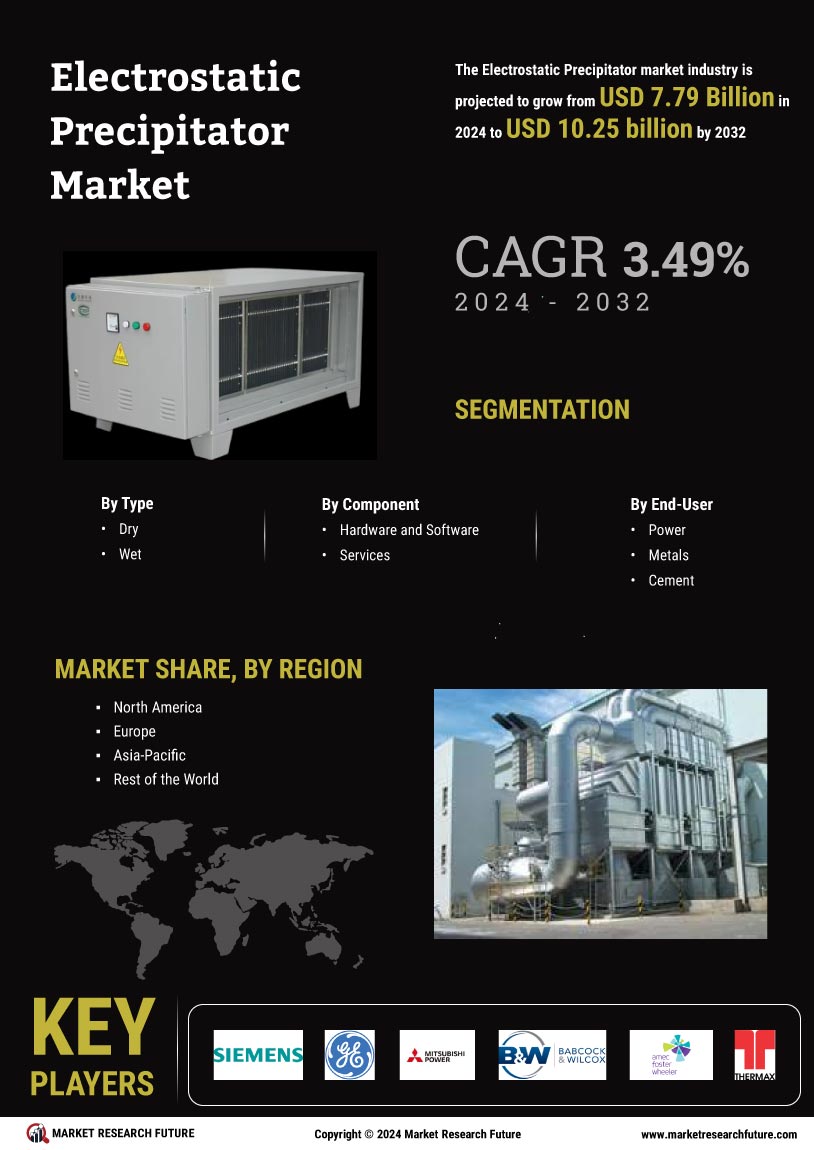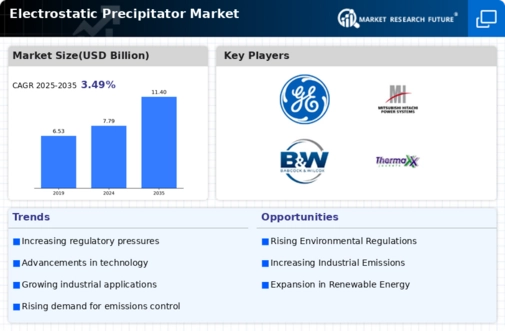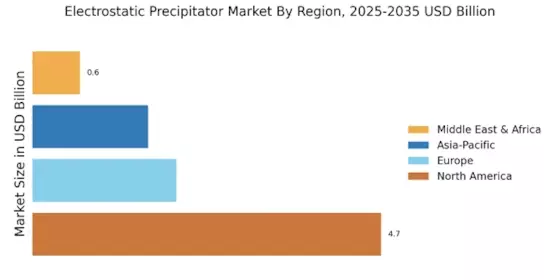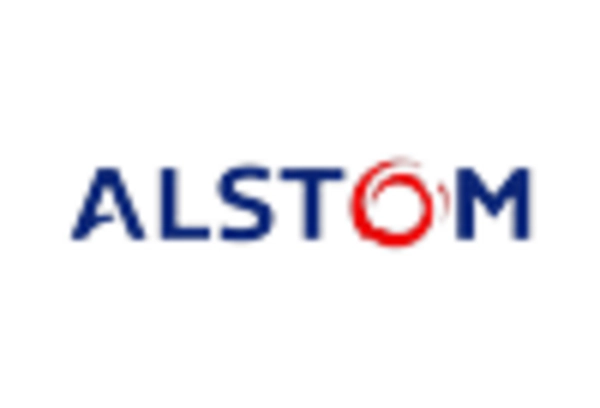Electrostatic Precipitator Market Summary
As per MRFR analysis, the Electrostatic Precipitator Market Size was estimated at 7.79 USD Billion in 2024. The Electrostatic Precipitator industry is projected to grow from 8.062 USD Billion in 2025 to 11.36 USD Billion by 2035, exhibiting a compound annual growth rate (CAGR) of 3.49 during the forecast period 2025 - 2035.
Key Market Trends & Highlights
The Electrostatic Precipitator Market is poised for growth driven by regulatory pressures and technological advancements.
- North America remains the largest market for electrostatic precipitators, driven by stringent environmental regulations.
- Asia-Pacific is emerging as the fastest-growing region, reflecting a surge in industrial activities and air quality concerns.
- The dry segment continues to dominate the market, while the wet segment is experiencing rapid growth due to its efficiency in specific applications.
- Key market drivers include increasing industrial emissions regulations and rising awareness of environmental sustainability.
Market Size & Forecast
| 2024 Market Size | 7.79 (USD Billion) |
| 2035 Market Size | 11.36 (USD Billion) |
| CAGR (2025 - 2035) | 3.49% |
Major Players
General Electric (US), Siemens (DE), Babcock & Wilcox (US), Alstom (FR), FLSmidth (DK), Mitsubishi Heavy Industries (JP), Andritz (AT), Hitachi Zosen Corporation (JP), Thermax (IN)


















Leave a Comment